
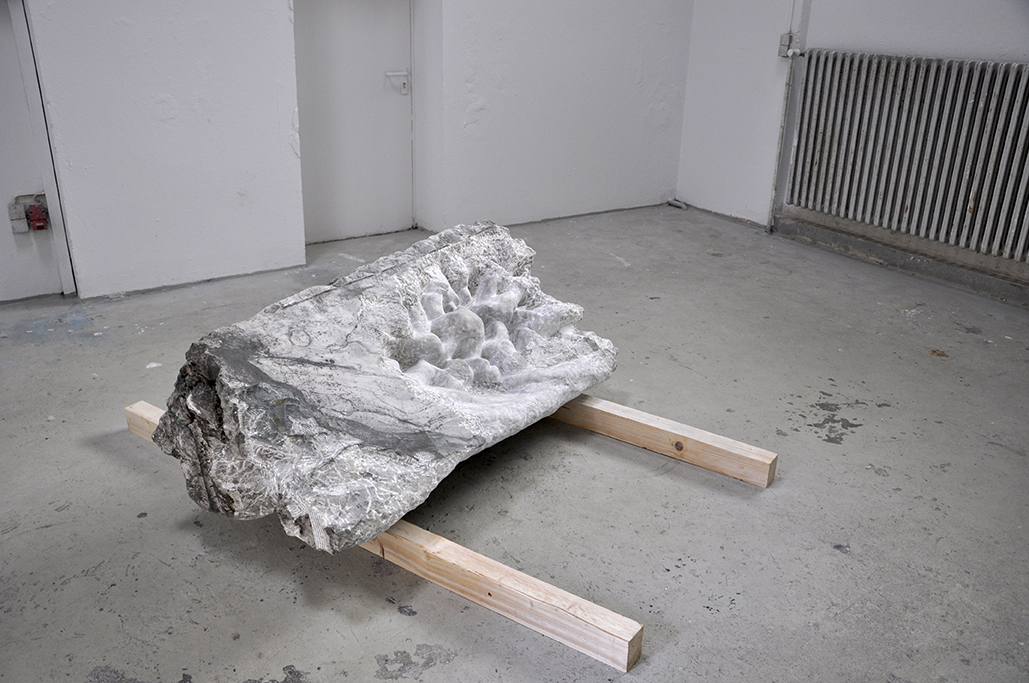

Untitled (Deutschrot-hell)
2018
Limestone
162cm x 80cm x 55cm
This work deals with an old unused quarried stone. Its atypical, diagonally sawed shape and the broken edge suggest that this stone must have been separated on account of its frail nature, a scrap material similar to waste. Through the context of Georg Bataille’s term "l'informe", the idea of “waste” is questioned and inconsistencies about the production of value are made visible.
The unpredictability and brittle constitution is condition of working with the stone. The material resists being completely controlled. The carving is not aimed to attain a preconceived result or product. It is an open ended process with an unknown result.
In the sculpting process, the stone was turned at irregular intervals. Turning the stone is a method to create form without having previously set it as an intended goal. Each rotation revealed different surfaces, each of which could be new and individually handled. However, only partial compositions could be made. There was always a concealed surface, the temporary base.
The presentation references this act. Temporary, limited to the duration of the exhibition, the stone will be shown in a different orientation each time and with a different surface facing upwards. In this way the idea of a fixed composition is questioned and the necessity of a permanent orientation is challenged.
2018
Limestone
162cm x 80cm x 55cm
This work deals with an old unused quarried stone. Its atypical, diagonally sawed shape and the broken edge suggest that this stone must have been separated on account of its frail nature, a scrap material similar to waste. Through the context of Georg Bataille’s term "l'informe", the idea of “waste” is questioned and inconsistencies about the production of value are made visible.
The unpredictability and brittle constitution is condition of working with the stone. The material resists being completely controlled. The carving is not aimed to attain a preconceived result or product. It is an open ended process with an unknown result.
In the sculpting process, the stone was turned at irregular intervals. Turning the stone is a method to create form without having previously set it as an intended goal. Each rotation revealed different surfaces, each of which could be new and individually handled. However, only partial compositions could be made. There was always a concealed surface, the temporary base.
The presentation references this act. Temporary, limited to the duration of the exhibition, the stone will be shown in a different orientation each time and with a different surface facing upwards. In this way the idea of a fixed composition is questioned and the necessity of a permanent orientation is challenged.

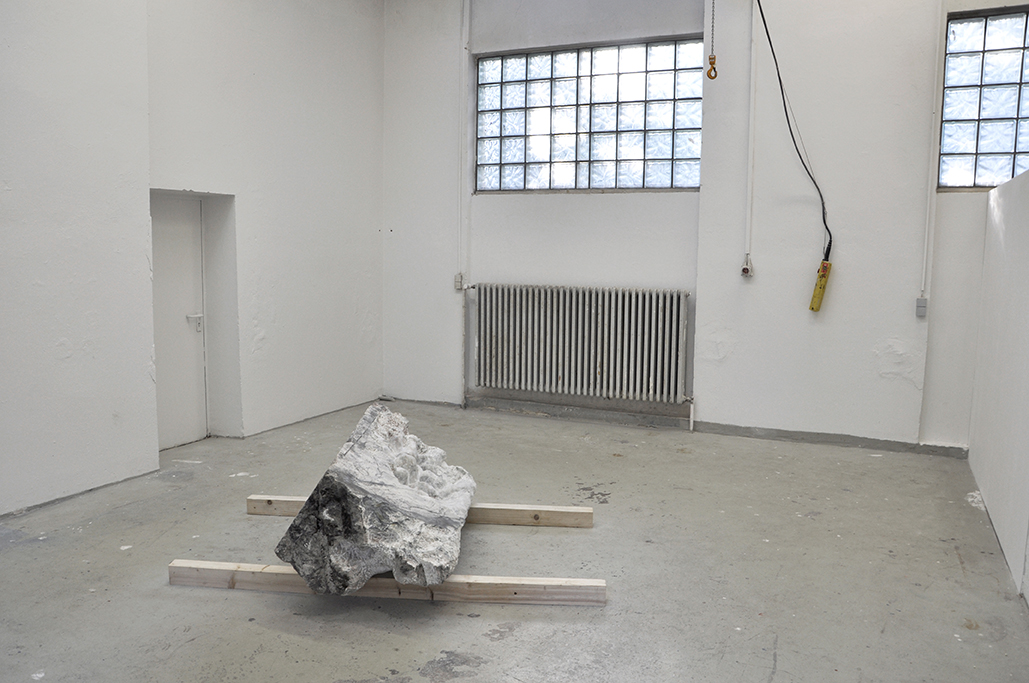
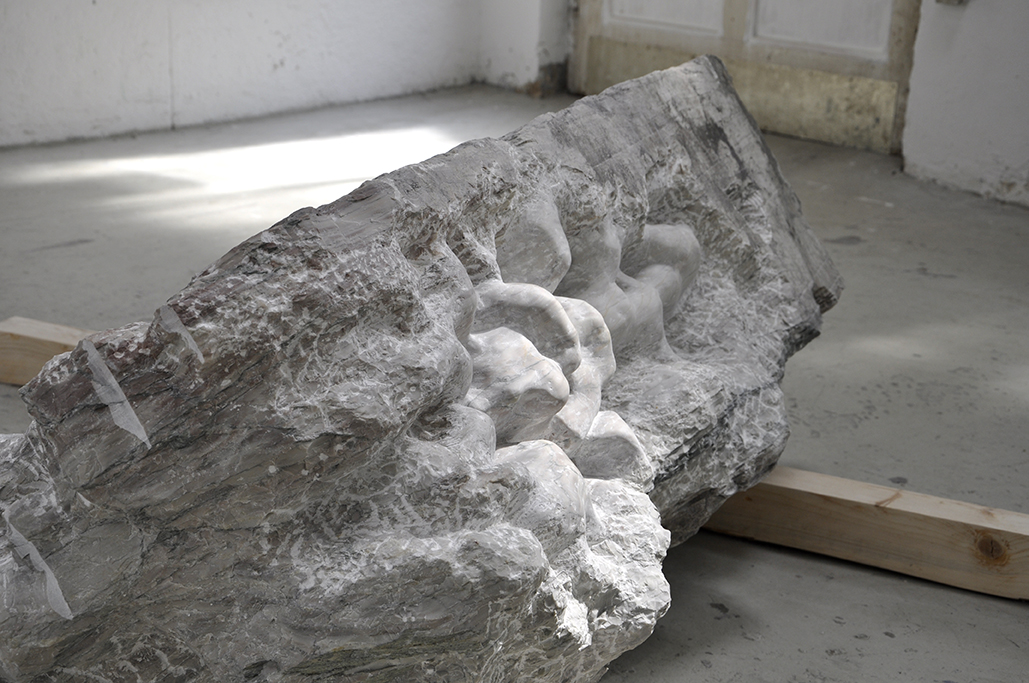
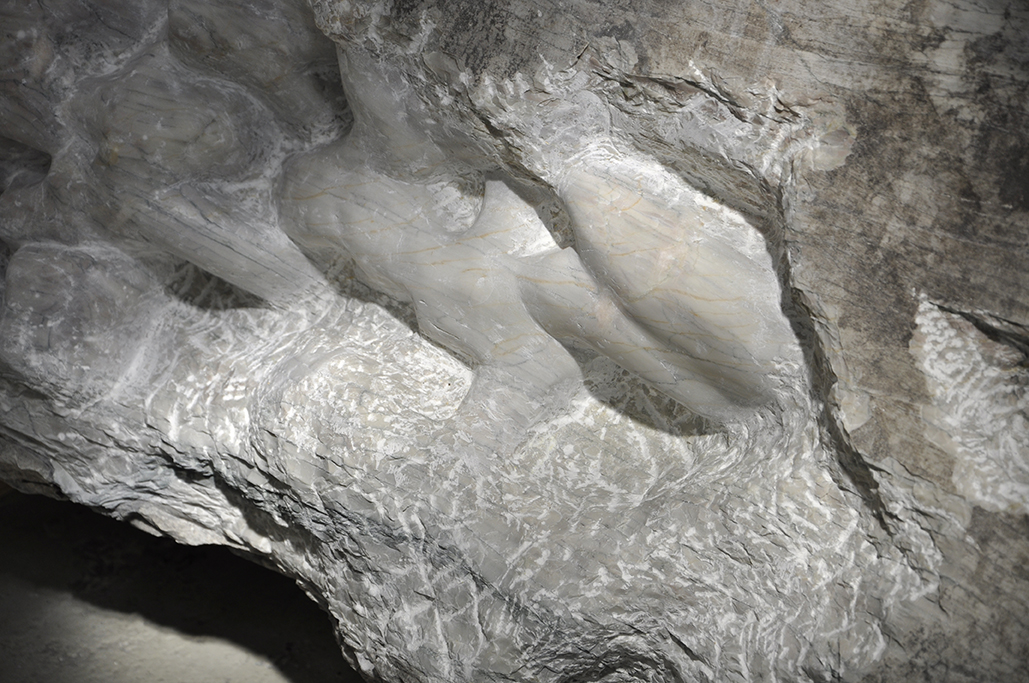
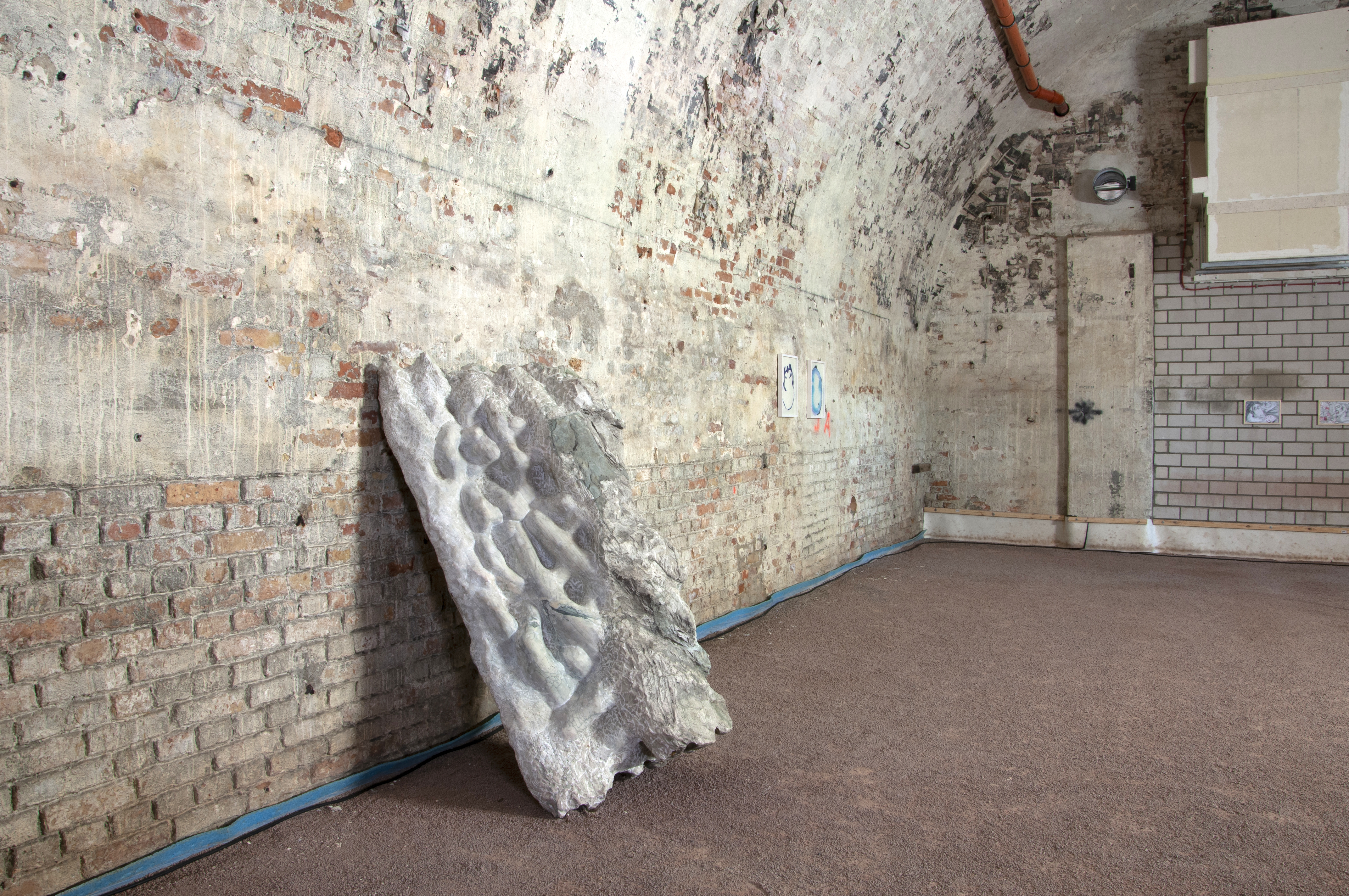
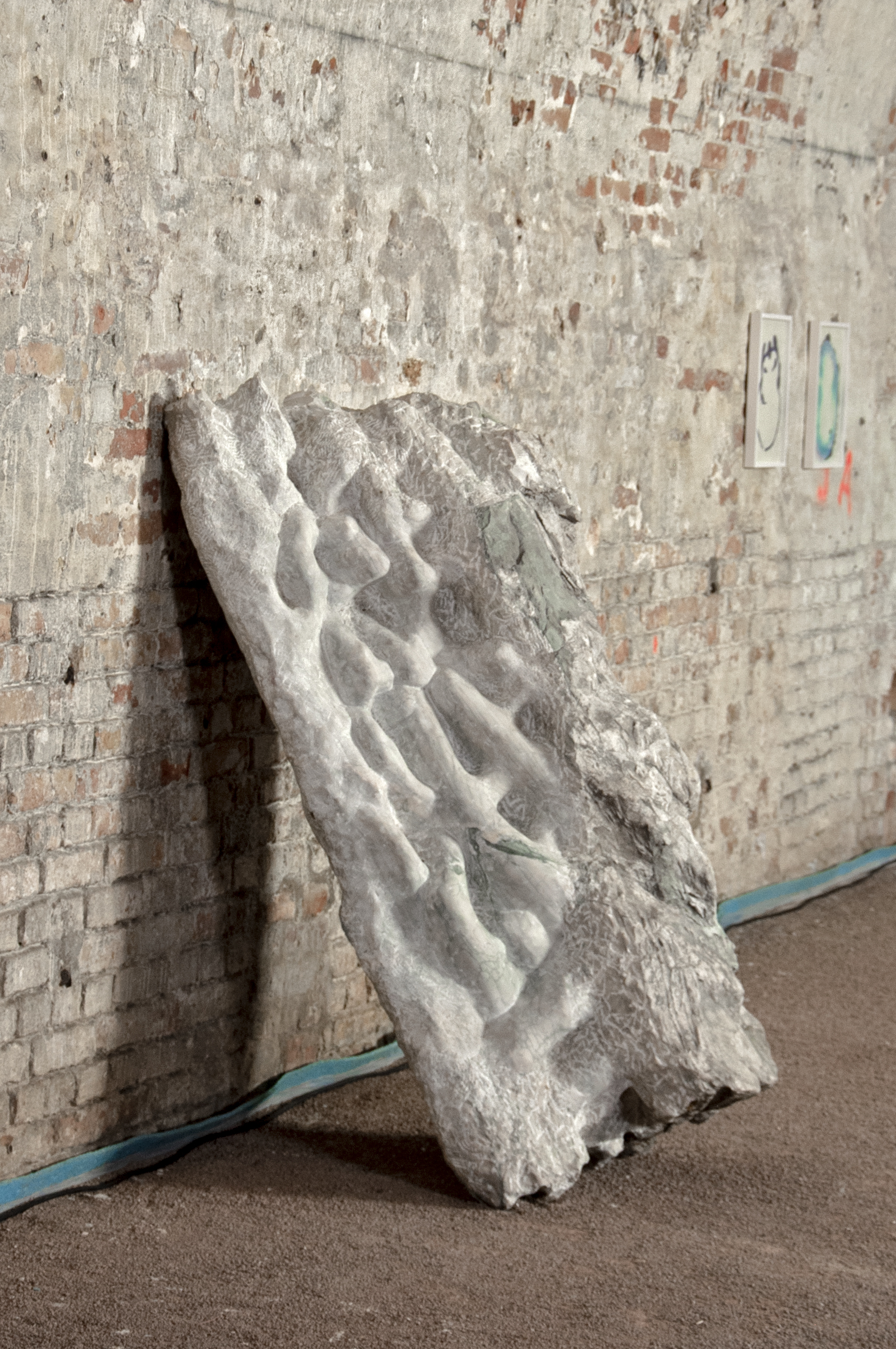

© Joshua Zielinski - 2025